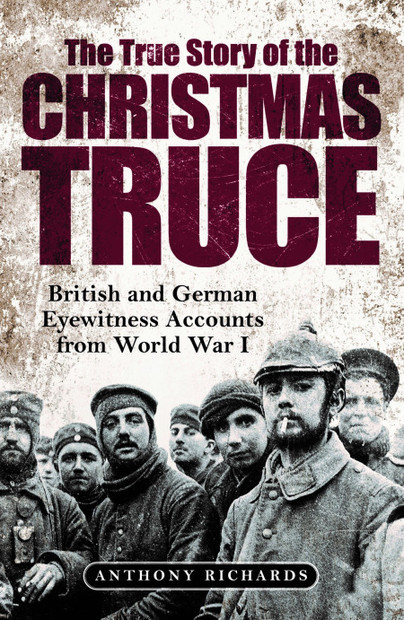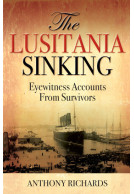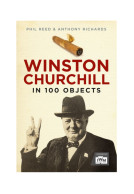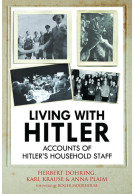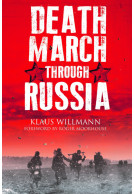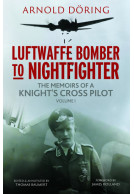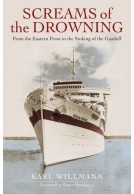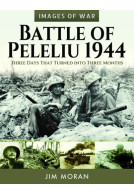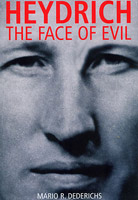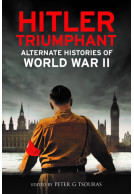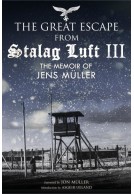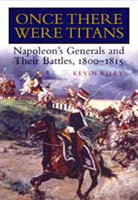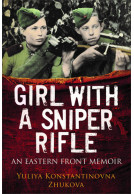The True Story of the Christmas Truce (Hardback)
British and German Eyewitness Accounts from World War I

Pages: 256
Illustrations: 16 black and white illustrations
ISBN: 9781784386146
Published: 1st September 2021
In the press
As featured in the Daily Mail: 'Diaries of German soldiers recount WW1 Christmas truce'.
(click here for international delivery rates)
Order within the next 11 hours, 12 minutes to get your order processed the next working day!
Need a currency converter? Check XE.com for live rates
| Other formats available - Buy the Hardback and get the eBook for £1.99! | Price |
|---|---|
| The True Story of the Christmas… ePub (13.4 MB) Add to Basket | £6.99 |
‘One of them shouted “A Merry Christmas English. We’re not shooting tonight.” . . . [then] they stuck up a light. Not to be outdone, so did we. Then up went another. So, we shoved up another. Soon the lines looked like an illuminated fete.’ Rifleman Leslie Walkington
On Christmas Eve 1914, a group of German soldiers laid down their arms, lit lanterns and started to sing Christmas carols. The British troops in nearby trenches responded by singing songs of their own. The next day, men from both sides met in No Man’s Land. They shook hands, took photos and exchanged food and souvenirs. Some even played improvised football games, kicking around empty bully-beef cans and using helmets for goalposts. Both sides also saw the lull in fighting as a chance to bury the bodies of their comrades.
In some parts of the front, the truce lasted a few hours. In others, it continued to the New Year. But everywhere, sooner or later, the fighting resumed. Today, the Christmas Truce is seen as a poignant symbol of hope in a war that many people regard as unnecessary and futile. But what was the real story of those remarkable few days?
In this fascinating new book, historian Anthony Richards has brought together hundreds of first-hand reminiscences from those who were there – including previously unpublished German accounts – to cast fresh light on this extraordinary episode.
"Richards does a fine job of weaving analysis into the interesting firsthand recollections. His use of German sources also enhances the historical significance of the book."
Roads to the Great War, January 2022
Thanks to its creditable and carefully selected collection of accounts, even owners of multiple books on the subject will find in it a useful springboard for further research.
Andrew Lucas, Western Front Association
Richards book has added yet another important facet to this special story, and has further separated fact from fiction in terms of the myth that has built up over the years. As he states, ‘while the Some and Ypres will always be associated with the massive casualty figures suffered by both sides as, as a result of the fighting in those sectors, the Christmas Truce is unique for being remembered as a moment of peace within the wider conflict”.
Jon Sandison
Rating: 5 out of 5 stars
NetGalley, Claire Lavin
This book was amazing. It had me hooked from the very start. It is truly awe inspiring book. I just loved the authors style of writing keeping the book light and following. Without packing it tight with facts that make it heavy reading. I just breezed on through it while learning so much. You could tell from the start that it was well researched. It was fantastic reading the eyewitness accounts of the truces and the fraternization between enemies on minute, friends the next then vice versa . I really enjoyed learning about how the officers and Higher up dealt with this. It was so factual and well layed out into nice easy chapters. I especially loved reading about one soldiers account of the truce from the Manchester regiment. Which is my home town, so I felt even more connected with the book.
I can't wait to read more from this author as he is one to look out for.
So much praise goes out to the author and publishing team for bringing a truly stunning accounts of the truces during the first World War in such a fascinating style.
As featured in: '1914 Trice: Tommies were our brothers'
The Mirror
These events that took place during the early portion of WWI helps to replenish your faith in humanity, which while never, repeated makes for an interesting historical event. I do not believe that any of those that were involved in these events are still alive, and so these words provided by the people make for a unique reference and insight into the front line on the Western front during Christmas 1914.
Armorama
Read the full review here
In his book, historian Anthony Richards has brought together hundreds of first-hand reminiscences from those who were there – including previously unpublished German accounts – to cast fresh light on this extraordinary episode.
Julian Stockwin
Read the full review here
The Christmas Truce of World War One is one of those stories that has been mixed and confused over time, even to the point that some people would argue whether it happened or not. What this book does through looking at British and German soldier accounts from the time is that there was a Christmas Truce, but it wasn’t one big truce it was various small Christmas truces that took part in certain parts along the WWI trenches. Some had a kickabout, some repaired trenches and others exchanged gifts. You see the reason was that soldiers were fed up with fighting and it was cold, wet and this was a war that people had been saying wouldn’t last long. Plus the truce in places lasted longer than just Christmas, but if you think about it when nobody is fighting you can bury dead bodies, sit and eat or simply just get out of muddy holes in the ground. This was a very good read, one I thoroughly enjoyed and it was well written. For once it was nice to read about a war where there were some lighter moments and a bit of humanity being shown, even if a couple of days later they had to go back to fighting.
UK Historian
Read the full review here
An amazing account of the Christmas truce - it doesn't get better than this.
Books Monthly
"This readable and thoroughly researched book is a welcome volume to the historiography of the First World War."
Roger Coleman, The Wessex Branch of the Western Front Association
5 stars: When the madness stopped
Amazon Customer
Read the full review here
Rating: 5 out of 5 stars
NetGalley, Wyn Lewis
On Christmas Eve, 1914, in trenches along the Western Front, some German soldiers laid down their arms, put up lights and started singing carols. Soon, the British soldiers did the same. This armistice lasted into Christmas Day and beyond, with a spontaneous meeting of the combatants in No Man’s Land. Gifts were exchanged and even football matches were played, and a legend was born. This book attempts to cut through the myths to tell the true story of the Christmas Truce.
The event has become almost mythological over the years and Anthony Richards reveals that even during the First World War itself some people doubted it had happened. As this excellent book reveals, there wasn’t one single truce but a series of small truces along different parts of the frontline, of varying duration. Drawing on newly discovered and translated German accounts of the Truce, we are able to get an insight into the other side of the story.
Anthony Richards sets the scene of the first few, arduous months of the First World War, when the harsh winter and other factors had forced both armies into trenches, leading to a kind of siege mentality. Eventually, the mutually awful living conditions would lead to a feeling of empathy -“live and let live” - between the German and Allied forces, and much fraternisation.
Soldiers on both sides received parcels of food and clothing at Christmas and their subsequent letters home, printed here, are poignant and revealing, as are the firsthand reports of the impromptu services and mutual goodwill on Christmas Day. Richards explores how the Christmas Truce was enacted in different places along the Western Front, including how both sides were soon helping the enemy bury their dead. However, the Truce was not recognised everywhere, and in some places the possibility of it was dismissed out of hand by one side or the other. It is also interesting that the Christmas Truce was viewed with suspicion by the senior commanders of both sides, and as an affront to the patriotic nationalism expected from the armies, resulting in official attempts to prevent future reoccurrence. As for the legendary organised football match, sadly this likely never happened, save for a few “rough kickabouts”. Richards also examines the causes and legacy of the Christmas Truce.
Full of riveting reminiscence from both German and British soldiers, this book is concise and well-researched. The legacy of the Christmas Truce will live on as one of the better events of the First World War. As the diary entry of a German officer succinctly noted at the time -“[We] were as happy as children at play”.
There have been several books written in the past twenty years on this subject, each of which has added something to the discussion. Unfortunately to a greater or lesser degree they have been anchored on the ‘miracle’ of the truce and intentionally or otherwise support the overly simplistic view trotted out in the popular press almost every year. This book tries to be more objective and draws on more resources from the German side of the line. Inevitably if one has studied the subject in depth there are compromises and omissions in the narrative but these are generally minor such as the 6th Cheshires being in the line under instruction from the Norfolks; where are the accounts from the Norfolks? My colleague Steve Smith who is expert on the Norfolks could no doubt add more in that context. However such comment is at the margins. The book is an advance on the existing books on the subject and deserves to be read.
Michael McCarthy
Michael McCarthy. Battlefield Guide
About Anthony Richards
Anthony Richards has worked at the Imperial War Museum for more than twenty years, where he is responsible for the document and sound archives. A qualified archivist, he has contributed to many publications and media projects based on personal written testimony of the two world wars, including articles for The Telegraph newspaper, the Royal Mail Stamp Yearbook, and the ITV series The Great War: The People’s Story (2014). He is also the author of The Somme: A Visual History and In Their Own Words; (both IWM, 2016) and Documents That Changed History (IWM, 2018).
About Eva Burke
Eva Burke grew up in Vienna and then Zug, Switzerland. She graduated from Brandeis University, Massachusetts with a BA and MA in Near Eastern and Judaic Studies and Contemporary Jewish Studies. She translated Screams of the Dying (Greenhill Books) and I Somehow Survived (Greenhill Books). She lives in London with her husband, four children and three grandchildren.
Legendary "Christmas Truce" takes place on the battlefields of WWI between British and German troops.
25th December 1914
Instead of fighting, soldiers exchange gifts and play football.







